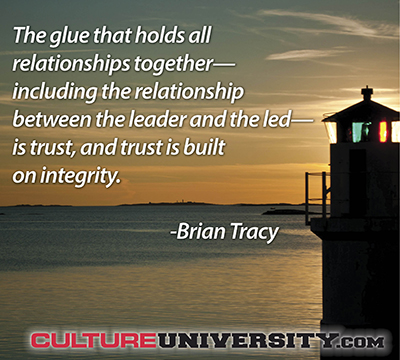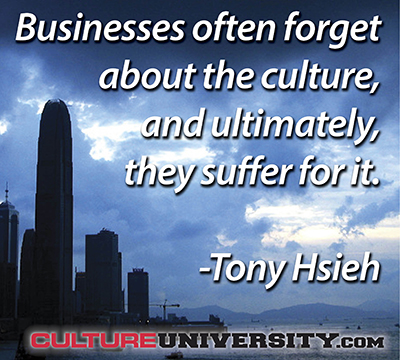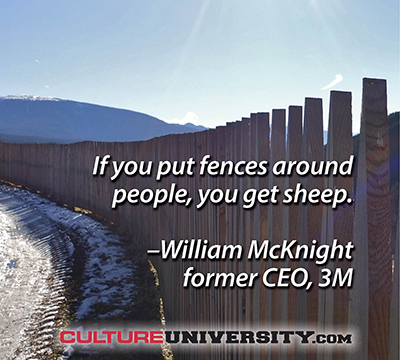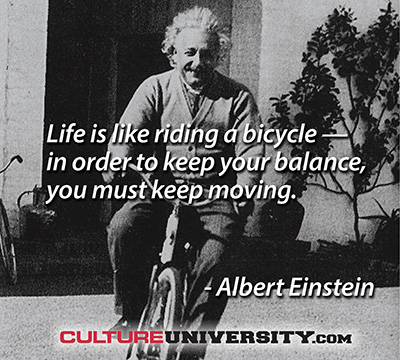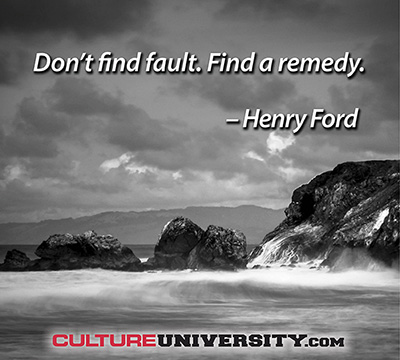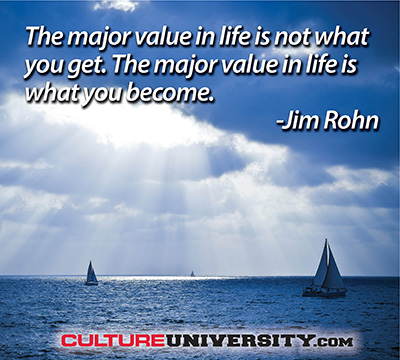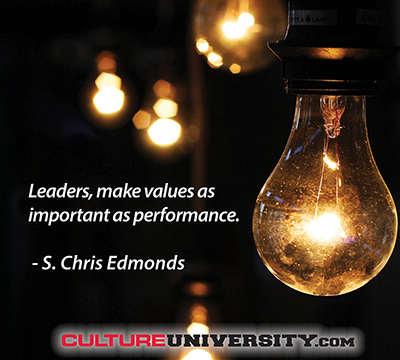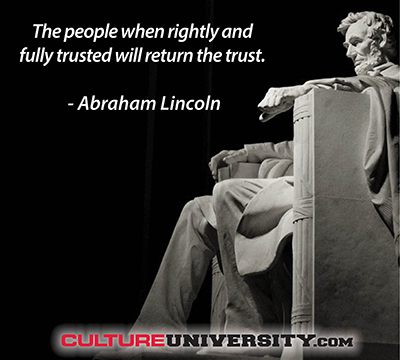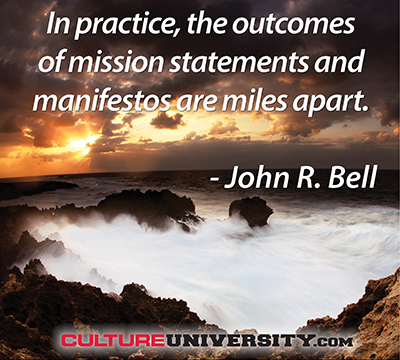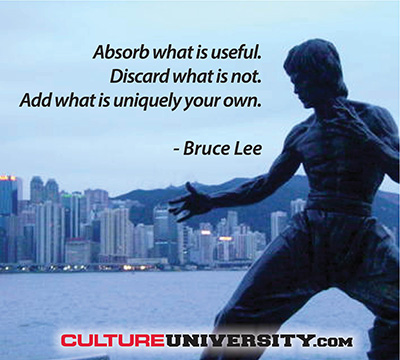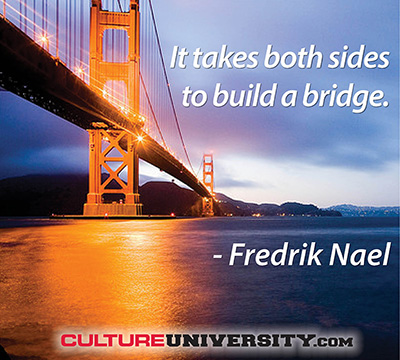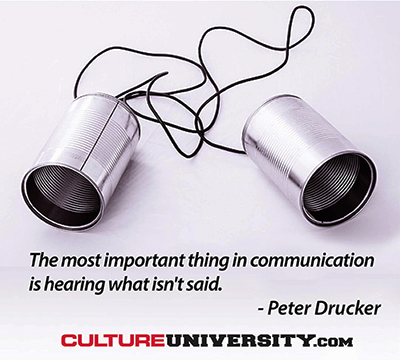Distrust is the new normal. There has been a dramatic decline over at least the past 15 years in almost every sector of our society—distrust of the police, government, financial institutions, ethnic groups, and even each other. “Distrust” is the headline every night on the news.

Positively impacting society on a global scale through culture awareness, education and action.
Most organizations are striving to help their employees improve their health and well-being. While intuitively, this makes sense – healthier employees are certainly happier and more productive – it’s also a sound strategy from a business perspective.
Culture is a hot topic. It was the Merriam-Webster “word of the year” for 2014. Leaders and experts across the world are talking about how to develop an agile culture, implement a lean culture, overcome the culture clash in acquisitions, and many other areas of culture change. Unfortunately, the reality is that most of these leaders and experts are actually focusing their efforts on climate and not dealing with the deeper, more powerful subject of culture. I didn’t understand the difference until the past few years.
Many modern organizations are locked into a mindset – an organizational culture – that began with the Industrial Revolution in eighteenth-century Britain and was fully developed during the Second Industrial Revolution in the US. The great success of these revolutions – creating modern business and generating huge wealth – makes it easy to believe that what worked as a way of managing great corporations in the early 1900s is still the best way to run an organization in the twenty-first century. But times have changed.
As the strategic planning consultant to the National Wrestling Hall of Fame I get some inside looks at the high performance culture of the sports world. A couple years ago I was sitting next to a very sweaty and happy Chris Perry, who minutes earlier had won an NCAA championship title. I asked Chris when he started wrestling and he said in 4th grade. It takes that kind of proactive plan to become a NCAA Champion. His dad was sitting behind us weeping tears of joy and relief having invested heavily in the sustainable approach to success over the past 12-15 years.
Let’s demystify the art and practice of leadership. There are many parallels to the aspects of riding a bicycle and leading the team.
First of all, the purpose or usefulness of the bicycle is to get from point A to point B. Clearly, leadership is focused on forward movement toward a vision of a future desired state.
The bicycle has a framework or structure that allows it to transfer energy to serve a positive purpose. Leadership, truly is about energy management and how to focus the individual and collective energy on meaningful goals of the organization.
You know the types. There’s the office yeller, intimidating others with vitriolic rant. There’s the passive-aggressive underminer, nodding assent but then dragging her feet. There’s the colleague who gets angry over a perceived slight, but then quickly shifts tone. Conflict in the workplace is pervasive and unavoidable. And it isn’t always a bad thing. Healthy debate can be good for your corporate culture. It ensures that diverse perspectives are considered or lights the fire a team needs to move from a stalemate to a creative solution. But when they turn ugly, conflicts can damage your culture—straining relationships and putting teams at risk.
We have used stories to pass on information for thousands of years and they remain the most powerful way we know to communicate. Indeed, the power of story is magnified in today’s super-connected, transparent world – the truth gets out fast and can be widely communicated – to millions of people all over the world – in such a short space of time.
Here is a story which illustrates how employees’ “felt experience” every day strongly shapes their perception of an organisation and how the impact compares to official “corporate messaging”. This, in turn, highlights the critical (often underappreciated) role played by facilities management in reinforcing organisation brand and values. What are the implications for the role of Facilities Management and the wider HR agenda?
Measles, a disease once thought to be completely eradicated, is making a comeback. The flu vaccine was only 23% effective this year as long-identified strains continue to mutate. Hospitals breed superbugs and must continuously adapt to stop the spread of potentially fatal infections. Just as healthy people can be felled overnight by a new disease or drug-resistant bacteria, companies can sicken and even collapse if their culture is allowed to get seriously unhealthy.
Is your workplace inspiring, engaging, and productive or frustrating, dull, and stagnant? Or is it somewhere in between?
Effective leaders pay attention to the quality of their work culture, every day. They know that culture drives everything that happens in their team or department or company, good or bad. They invest time and energy observing interactions, engaging with players and customers, celebrating aligned behavior, and coaching misaligned behavior.
Unfortunately most leaders don’t pay much attention to the quality and health of their team, department, or company culture.
Imagine walking into your leadership team meeting wondering whether the same old politics was going to play out. Would the same people work their own private agendas, again? Would the same people be silent and watch it happen? Would everyone just be nice and kind and not honest, and let the meeting pass without ever addressing the elephant in the room?
Is there a difference between mission statements and manifestos? Yes and no. Their intentions may be the same but that’s where the similarity ends. In practice, the outcomes of mission statements and manifestos are miles apart. Though manifestos and missions are crafted to bring people together behind a cause, manifesto’s have a much better track record of igniting action. The best are so emotionally charged that their catalytic influence can endure for centuries. Such was the case for the Ten Commandments, and the Declaration of Independence. As recently as fifty years ago, an emotional speech delivered from the steps of the Lincoln Memorial established a clear and convincing purpose for American Civil Rights. ‘I Have a Dream’ is arguably the most inspiring manifesto of our time.
Successful mergers and acquisitions must be based primarily on strategic, financial and other objective criteria, but leaders should not lose sight of understanding and heading off the potential clash of cultures that can lead to financial failure. Far too often, cultural and leadership style differences are not considered seriously enough or systematically addressed.
Every day in the news lately you read about the latest mergers: airlines, pharmaceutical companies, insurance companies, large retailers like Staples and Office Depot, all consolidating for so many business reasons. Some are successful and create flourishing companies that benefit stockholders and employee’s careers. But here’s the really scary reality: It’s been well documented over many years that up to one third of mergers fail within five years, and as many as 80 percent never live up to their full potential. The main reason for this is what has been called ‘cultural clash’.
Every company, department or team needs a leader. Leaders set the tone for the organization’s culture. It is a proven fact. Can you have a successful company without a CEO? Do football team captains play a major role in a winning season? Does a cruise ship need a captain to reach its destination safely? A focus on leaders is the natural design of how we operate as a society. So what education/training should be offered to develop the leaders, the influencers needed to grow your company, establish your branded culture, and obtain your business revenue goals of tomorrow?
Let’s focus on one of several key attributes a leader should possess: the ability to communicate effectively.
